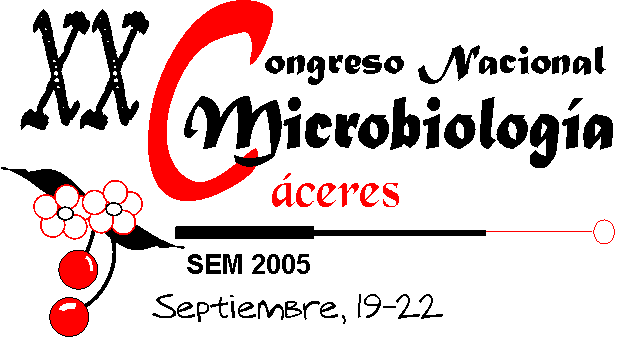

M - 159
Instituto de Agrobiotecnología (UPNA/ CSIC) Ctra. Mutilva s/n. Mutilva Baja 31192. Navarra. E-mail: maite.moran@unavarra.es
Glycogen phosphorylase (GlgP) belongs to a structurally related and ubiquitous group of proteins that are generally regarded as glucan-degrading enzymes that catalyze the production of glucose-1-phosphate (G1P) by the reversible cleavage of a-1,4 bonds at the non-reducing ends of polyglucans such as maltodextrins, starch and glycogen.
In contrast to the case of mammalian GlgPs, the role of the bacterial GlgP in glycogen metabolism is not well understood. Whereas Palmer et al. (1) suggested that GlgP does not play an important role in glycogen breakdown in E. coli, GlgP has generally been suggested to be the major enzyme of glycogen catabolism in bacteria that, in combination with debranching enzyme (GlgX) activity, participates in the slow degradation of glycogen during extended periods of substrate deprivation (2-4).
To understand the biological function of bacterial glycogen phosphorylase (GlgP) we have characterized different strains of E. coli with altered GlgP activities. glgP overexpressing BL21(DE3)C43 cells cultured in the presence of glucose exhibited a dramatic reduction of the glycogen content when compared with wild-type (WT) cells. In turn, both glycogen content and rates of glycogen accumulation in W3110 and B/r glgP deletion mutants (DglgP) were several fold higher than those of WT cells when cultured in the presence of glucose, whereas TG1 DglgP cells showed normal rate of glycogen accumulation and glycogen content as compared with WT cells. TG1 DglgP cells cultured with maltose exhibited a dramatic reduction of maltodextrins when compared with WT cells. Furthermore, TG1 DglgCAP deletion mutants lacking the glycogen biosynthetic machinery were unable to accumulate both glycogen and maltodextrins when cultured with maltose. In clear contrast, both BL21 (DE3)C43 DglgCAP and DglgP cells were shown to accumulate normal levels of maltodextrins as compared with WT cells. The overall results thus show that (a) GlgP plays a dual role in catalyzing glycogen breakdown and in producing precursors for maltodextrin biosynthesis, (b) control of GlgP on the glycogen breakdown and maltodextrin biosynthetic processes highly differs from one strain to another and (c) GlgP operates during glycogen accumulation.
1.Palmer, T. N., Wöber, G., and Whelan, W. J. (1973) Eur. J. Biochem. 39, 601-612
2.Chen, G. S., and Segel, I. H. (1968) Arch. Biochem. Biophys. 127, 164-174
3.Ball, S. G., and Morell, M. K. (2003) Annu. Rev. Plant Biol. 54, 207-233
4.Dauvillée, D., Kinderf, I. S., Li, Z., Kosar-Hashemi, B., Samuel, M. S., Rampling, L., Ball, S., and Morell, M. K. (2005) J. Bacteriol. 187, 1465-1473